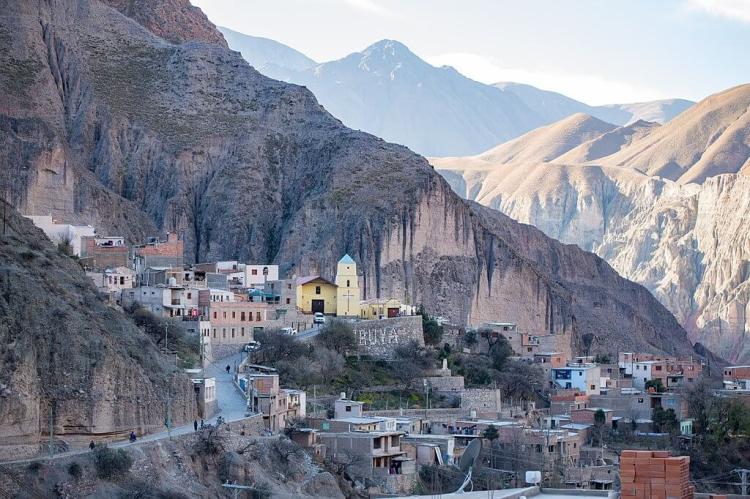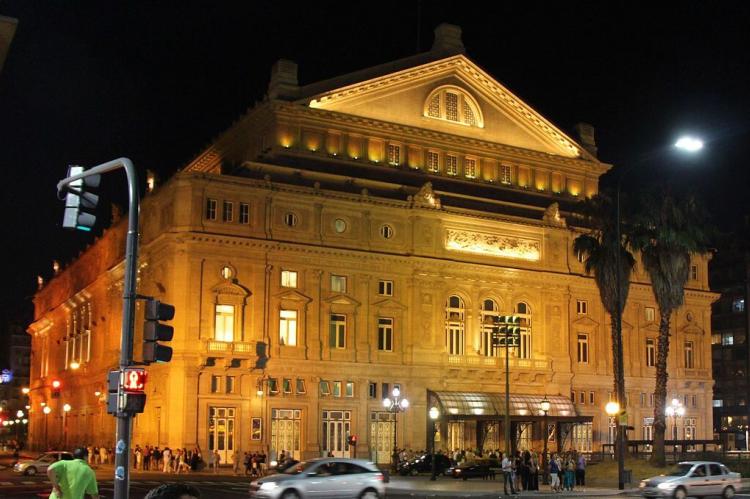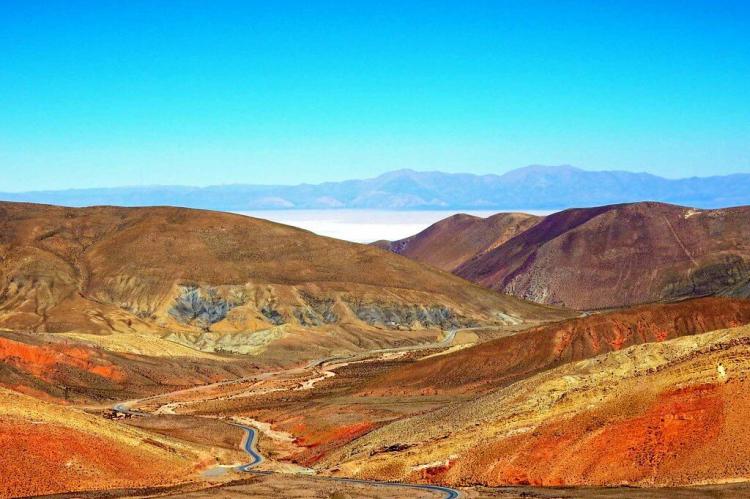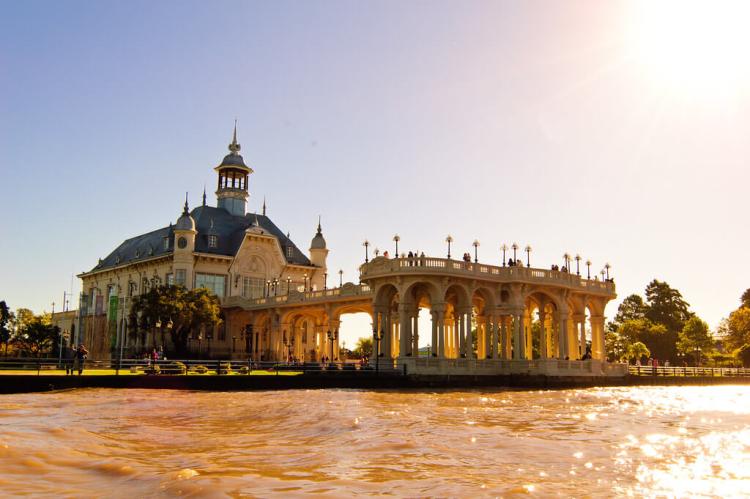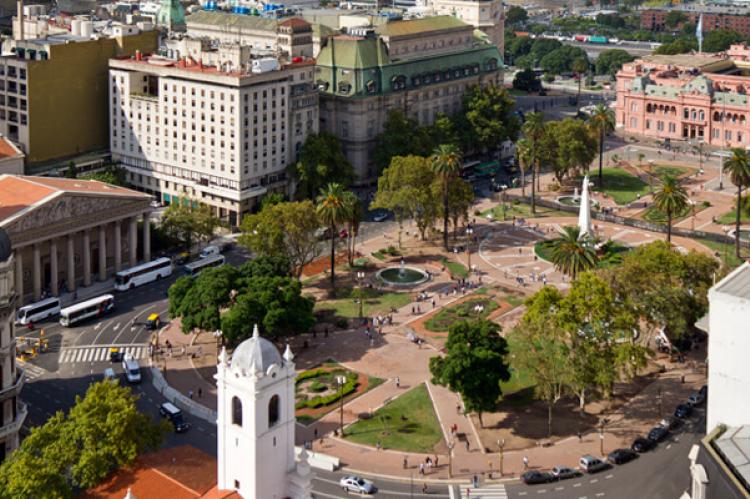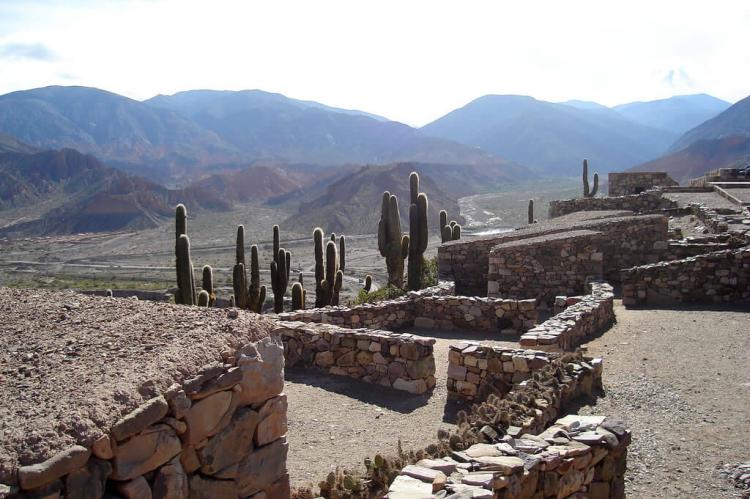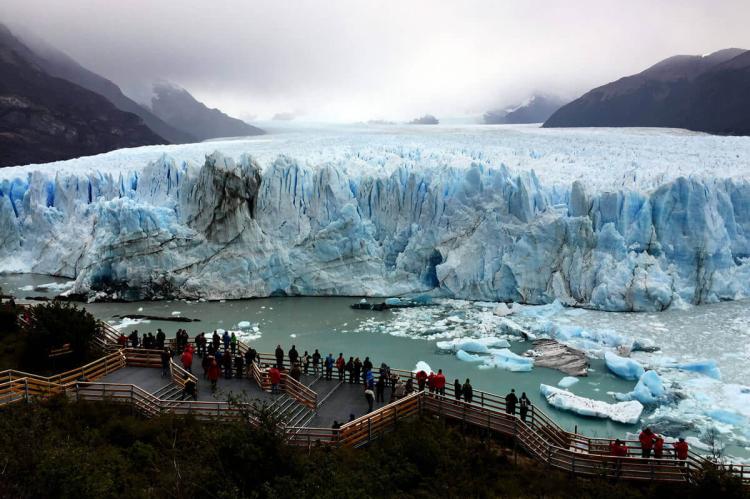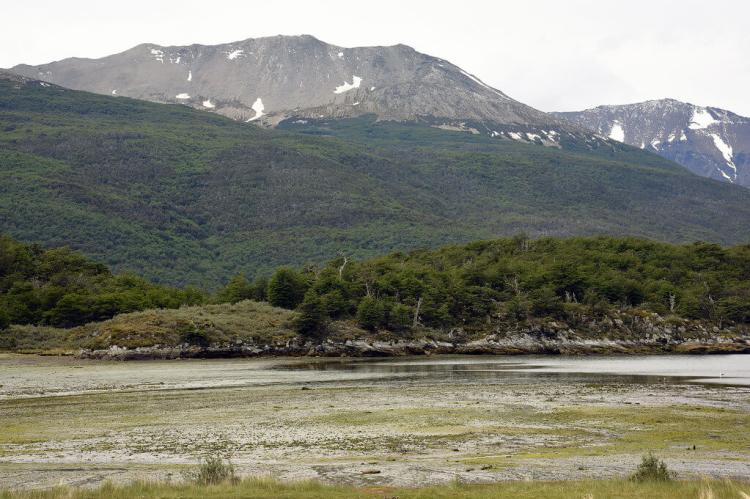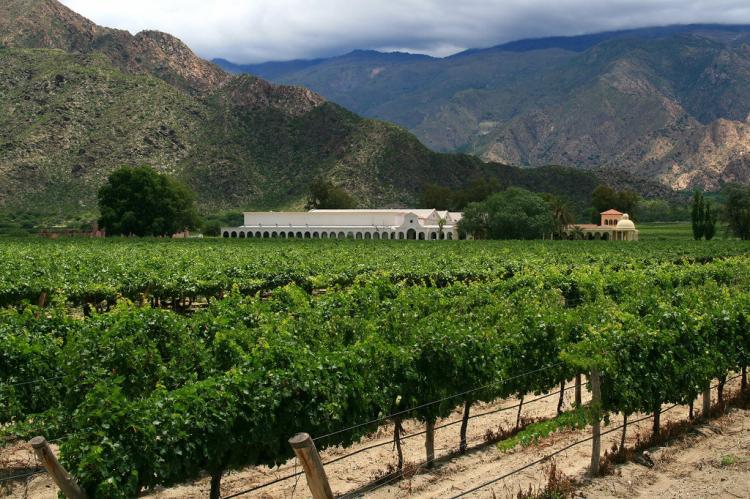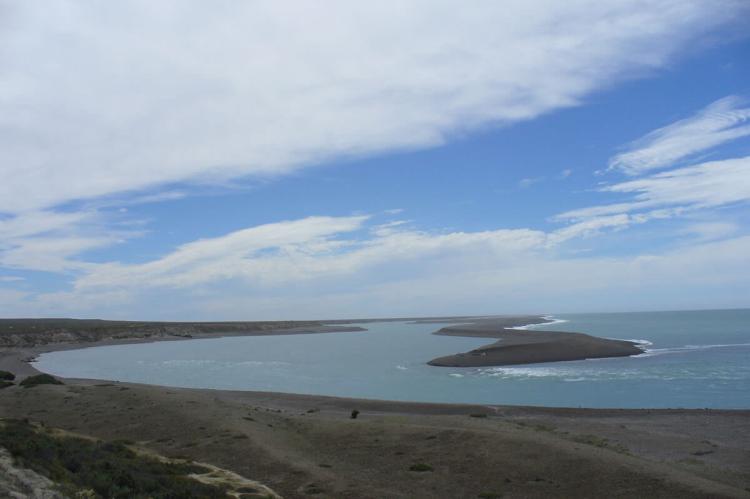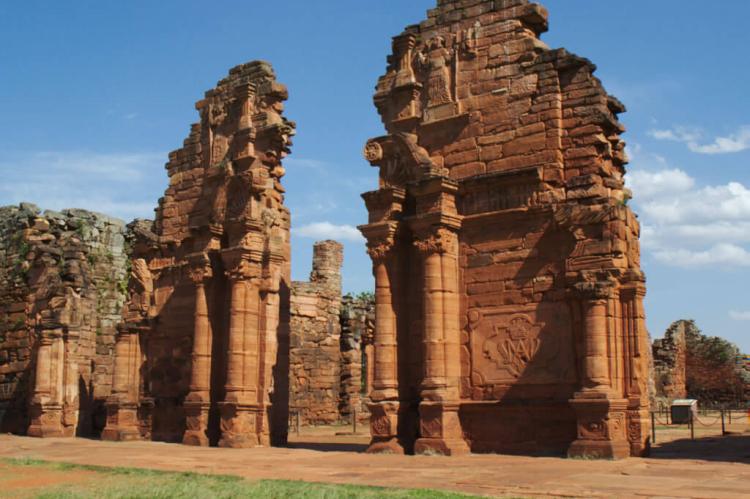The Cultural Landscape of Argentina
The cultural landscape of Argentina is diverse and complex, reflecting the country's rich history and heritage. The country's indigenous peoples, colonization by the Spanish, European immigration, and a diverse natural landscape have significantly impacted the country's culture.
Argentina's Vibrant Cultural Tapestry
Argentina's cultural landscape is a vibrant tapestry woven with threads from indigenous civilizations, colonial influences, and waves of immigration. This intricate fabric reflects a nation where diverse traditions, beliefs, and expressions coexist, creating a unique and captivating cultural identity.
Indigenous Roots and Natural Wonders
The indigenous peoples of Argentina, including the Mapuche, Toba, and Guarani, have lived in harmony with the land for thousands of years. Their heritage is deeply intertwined with the country's breathtaking natural landscapes, from the vast Pampas grasslands to the soaring Andes Mountains and the rugged Patagonian region. These diverse environments have shaped these communities' cultural practices, livelihoods, and worldviews, resulting in a rich tapestry of art, music, and spiritual beliefs that are still celebrated today.
Colonial Legacy and European Influences
In the 16th century, Spanish colonization brought a new layer of cultural complexity to Argentina. The colonizers introduced European architecture, language, and Catholicism, which blended with indigenous traditions to form a distinct Argentine identity. The remnants of this colonial past can be seen in the ornate churches, plazas, and historic neighborhoods that dot the landscape, particularly in cities like Buenos Aires and Córdoba.
Waves of Immigration
Argentina's cultural mosaic became even more intricate in the 19th and 20th centuries as waves of immigrants arrived from Europe, Asia, and neighboring countries. Italians, Spaniards, Germans, and other European communities brought their customs, cuisines, and artistic expressions, leaving an indelible mark on Argentine culture. The vibrant neighborhood of La Boca in Buenos Aires, with its colorful houses and tango halls, is a testament to the Italian influence. At the same time, the bustling Chinatown in the capital city reflects the growing Asian community.
Artistic Expressions
Argentina's cultural diversity is vividly reflected in its art, music, literature, and cuisine. The country has produced celebrated writers like Jorge Luis Borges, Julio Cortázar, and Ernesto Sabato, whose works explore themes of identity, existentialism, and the human condition. The tango, a sensual and melancholic dance that originated in the working-class neighborhoods of Buenos Aires, has become an iconic symbol of Argentine culture, captivating audiences worldwide.
Argentine cuisine is a delightful fusion of indigenous and European influences, featuring dishes such as the beloved empanadas (savory pastries), asado (grilled meats), and dulce de leche (caramelized milk dessert). The country's thriving art scene encompasses diverse mediums, from the vibrant murals adorning city walls to the contemporary installations and performances that challenge societal norms.
Contemporary Challenges and Resilience
Despite its rich cultural heritage, Argentina faces various challenges threatening to erode its cultural fabric. Economic inequality, environmental degradation, political instability, and violence have created social tensions and barriers to accessing cultural resources for many Argentines. However, the resilient spirit of the people shines through as artists, activists, and communities unite to address these issues and preserve their cultural identity.
One notable example is the fight against deforestation in the Gran Chaco region, where indigenous communities work to protect their ancestral lands and traditional ways of life. Similarly, urban neighborhoods in Buenos Aires have embraced street art and public performances as a means of self-expression and resistance against societal injustices.
Looking Towards the Future
As Argentina navigates the complexities of the 21st century, its cultural landscape continues to evolve, adapting to the forces of globalization, technological advancements, and shifting demographics. The influx of immigrants from neighboring countries like Bolivia, Paraguay, and Chile has added new layers to the cultural tapestry, enriching the nation's diversity.
However, the challenge lies in preserving cherished traditions and embracing modern influences. Initiatives such as cultural festivals, heritage preservation programs, and educational efforts aim to cultivate a sense of pride and appreciation for Argentina's multifaceted identity among younger generations.
Argentina's cultural landscape is a testament to its people's resilience and creativity of its people. It is a vibrant mosaic that has withstood the test of time and continues to captivate the world with its richness and authenticity. As the nation forges ahead, it carries the essence of its past while embracing the possibilities of the future, ensuring that its cultural tapestry remains a source of pride, inspiration, and wonder for future generations.
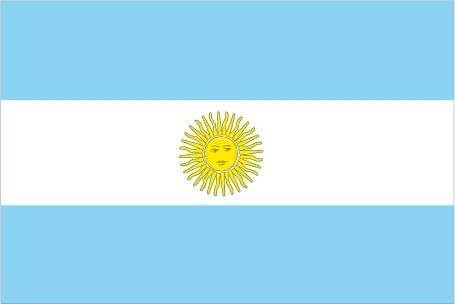
The official flag of Argentina
Cultural Geography of Argentina
Largest Cities / Metro Areas
Ranked by population estimate (2023):
Buenos Aires (15,490,000): Buenos Aires, the sprawling capital of Argentina, is an autonomous district on the western shore of the Río de la Plata on the country's eastern coast. A significant center of commerce, industry, and culture, it is a popular tourist destination known for its architecture and cultural heritage.
Córdoba (1,612,000): Córdoba, Argentina's second most populous city, is known as the Heartland of Argentina due to its location in the country's center in the foothills of the Sierras Chicas. It contains many historical monuments preserved from the period of Spanish colonial rule.
Rosario (1,594,000): Rosario, located near the country's center, is situated on the western bank of the Paraná River in southeastern Santa Fe province. The port city is known for its neoclassical architecture, which has been conserved in many houses and public buildings over the centuries.
Mendoza (1,226,000): Mendoza is located on the eastern side of the Andes in the foothills and high plains. The Greater Mendoza region is South America's most extensive wine and olive oil-producing area. As such, Mendoza is one of the eleven Great Wine Capitals and a winery tourism region.
San Miguel de Tucumán (1,027,000): Located on the Aconquija mountains, Tucumán is the capital and largest city of Tucumán Province and the most important city in northern Argentina. It is the commercial center of an agricultural area that produces large quantities of sugarcane, rice, tobacco, and fruit.
La Plata (914,000): La Plata is the capital city of Buenos Aires Province, Argentina's cultural and economic center. The city is located 9 km (6 mi) inland from the southern shore of the Río de la Plata estuary.
Salta (719,000): Salta is the capital and largest city of Salta Province in northwest Argentina. It is also the cultural center of the Valle de Lerma Metropolitan Area.
Mar del Plata (685,000): Located on the Atlantic coast of Buenos Aires Province, Mar del Plata is a major fishing port and Argentina's largest seaside beach resort.
Santa Fe de la Vera Cruz (584,000): Santa Fe is the capital of the province of Santa Fe in northeastern Argentina. Situated near the junction of the Paraná and Salado rivers, its port is modernized for oceangoing vessels. It is one of the most inland seaports in the world.
San Juan (551,000): San Juan is the capital of San Juan province in west-central Argentina. Lying along the San Juan River, the city is enclosed on three sides by the foothills of the Argentine Andes.
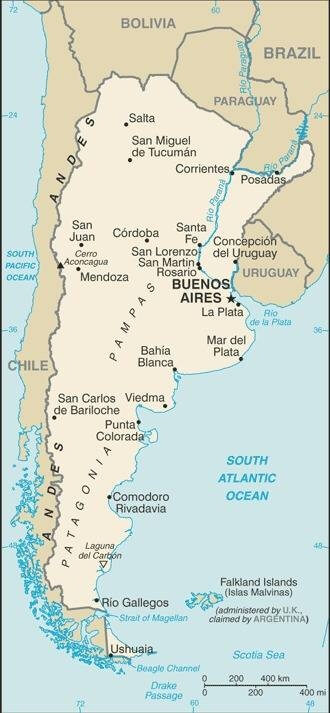
Map of Argentina with its most prominent cities
Geopolitical Zones
Argentina's provinces are often divided into six zones according to climate and terrain. These divisions are not strictly defined, and there may be variations in how they are delineated. Nevertheless, they serve as geographical and cultural distinctions within Argentina, highlighting its diverse landscapes, economies, and traditions.
Argentine Northwest
The Argentine Northwest region, known for its rugged terrain, is home to various ecosystems, from the high, arid plateaus of the Puna to the lush, subtropical jungles of the Yungas that cover the eastern slopes of the Andes. Further west, the mountain peaks reach over 6,000 m (20,000 ft), and the Altiplano, an extensive high plateau, dominates the landscape. The main economic activities in the region are agriculture, livestock, and mining.
Gran Chaco (north-central)
The Gran Chaco is a vast, hot, dry lowland plain characterized by dense forests, swamps, and scrubland. The region is home to indigenous communities and wildlife, including jaguars, ocelots, anteaters, armadillos, and tapirs. The main economic activities in the area are agriculture, livestock, and mining.
Mesopotamia or Littoral (northeast)
Mesopotamia is a humid and verdant area in the northeast of the country. It is known for its wetlands, and two rivers, the Paraná and Uruguay, dominate the region. The climate is subtropical, with hot, humid summers and mild winters. The main economic activities are agriculture, livestock, and tourism.
Cuyo (west-central)
Cuyo is a historical wine-producing region located in the mountainous area of west-central Argentina. It is also known for its mountainous landscapes, including the Andes Mountains and the Aconcagua, the highest peak in the Western Hemisphere. Cuyo has an arid or semi-arid temperate climate, while higher elevations experience icy conditions year-round. The main economic activities are wine production, agriculture, and tourism.
Pampas (east-central)
The Pampas is a vast, fertile plain that covers much of central Argentina. It is a temperate grassland characterized by its deep, fertile soil and rolling hills. It is the country's most productive agricultural region, and its extensive plains are ideal for livestock grazing and grain cultivation. The climate is mild, with warm summers and cool winters. Besides being one of the most important agricultural regions in the world, it is home to the iconic gaucho.
Patagonia (south)
Patagonia is a vast, sparsely populated region in Argentina's southern end. It is characterized by its rugged landscapes, including towering mountains, glaciers, lakes, steppes, and forests. The climate is cold and dry. The region is divided into the Patagonian Steppe and the Patagonian Forest. It is home to various wildlife, including guanacos, pumas, and condors. The main economic activities are tourism, agriculture, and livestock.
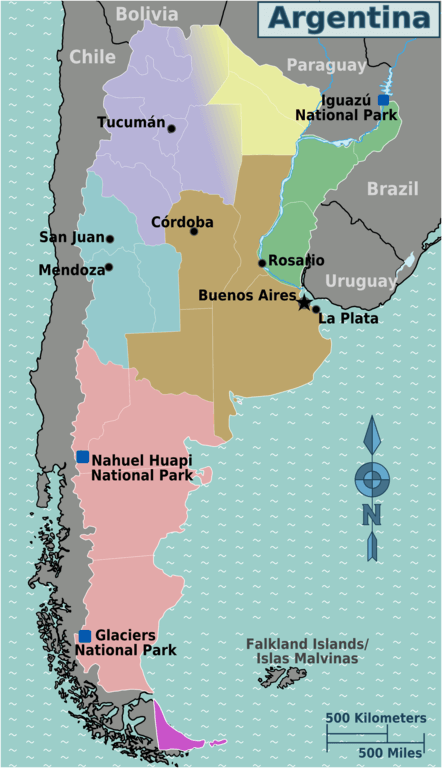
Map illustrating the geopolitical zones of Argentina
Administrative Divisions
Argentina is a federation of 23 provinces and one autonomous city, Buenos Aires. Each province has its own governor and provincial government, as well as its own legislative and executive branches governing its territories. The provinces are further divided into departments or partido (in the case of Buenos Aires Province).
Federal District
Autonomous City of Buenos Aires: Buenos Aires, often called the Federal District, is an autonomous city with special status. It is the capital of Argentina and functions as both a city and a province. Like the provinces, it has its mayor and government.
The provinces of Argentina, their capitals, and a brief description are as follows:
Argentine Northwest
Jujuy (Capital: San Salvador de Jujuy): Jujuy is known for its stunning landscapes, including the Quebrada de Humahuaca canyon, traditional Andean culture, and colorful festivals.
Salta (Capital: Salta): Salta blends colonial architecture, Andean traditions, and breathtaking landscapes, including the stunning Quebrada de Cafayate.
Tucumán (San Miguel de Tucumán): Tucumán is historically significant for its role in Argentina's independence. It's also known for agriculture and sugar production.
Catamarca (San Fernando del Valle de Catamarca): Catamarca boasts rugged landscapes and is home to the majestic Andes. It features archaeological sites and colonial architecture, blending history and natural beauty.
La Rioja (La Rioja): La Rioja is known for its desert landscapes, vineyards producing fine wines, and historical sites related to Argentine independence.
Gran Chaco (north-central)
Formosa (Formosa): Formosa is in the far north, featuring diverse ecosystems like wetlands and forests. It's culturally rich with Indigenous influences.
Chaco (Resistencia): Chaco, situated in the northeastern part of the country, is characterized by its subtropical climate and wetlands. It's an important agricultural region and has a mix of Indigenous cultures.
Santiago del Estero (Santiago del Estero): Santiago del Estero is one of Argentina's oldest provinces, rich in history and culture. It's known for its folklore and rural traditions.
Mesopotamia or Littoral (northeast)
Misiones (Posadas): Misiones is famous for the stunning Iguazú Falls and its subtropical rainforests, which provide a unique environment for diverse wildlife.
Corrientes (Corrientes): Corrientes is located along the Paraná River and is known for its Carnival celebrations, water-related activities, and the Esteros del Iberá wetlands.
Entre Ríos (Paraná): Entre Ríos lies in the Mesopotamia region and offers fertile agricultural lands, hot springs, and river tourism along the Paraná River.
Cuyo (west-central)
San Juan (San Juan): San Juan is located in the Andes and is known for its wine production, mining industry, and fascinating geological formations.
San Luis (San Luis): San Luis features a variety of landscapes, from mountains to valleys. It offers outdoor activities and has a tranquil, laid-back atmosphere.
Mendoza (Mendoza): Mendoza is a wine lover's paradise with extensive vineyards framed by the Andes. It offers adventure tourism and cultural experiences.
Pampas (east-central)
Santa Fe (Santa Fe): Santa Fe is an agricultural powerhouse with a significant industrial base. It's known for its riverfront areas and historical sites.
La Pampa (Santa Rosa): La Pampa is characterized by its flat terrain, agricultural productivity, and rural traditions. It offers a quieter, more pastoral way of life.
Buenos Aires (La Plata): Buenos Aires Province surrounds the capital city and is the most populous and economically significant province. It combines urban centers with fertile farmlands, and its coastal areas offer beautiful beaches and seaside resorts.
Córdoba (Córdoba): Córdoba is a dynamic province known for its historic architecture, vibrant arts scene, and the scenic Sierras de Córdoba mountain range.
Patagonia (south)
Río Negro (Viedma): Río Negro is known for its diverse landscapes, from the Andes to the Atlantic coastline. It offers both natural beauty and cultural experiences.
Neuquén (Neuquén): Neuquén is a Patagonian province with picturesque lakes, rivers, and mountains. It's a hub for outdoor activities and ecotourism.
Chubut (Rawson): Chubut offers diverse geography, from coastal areas along the Atlantic Ocean to the Andes. It has a unique Welsh heritage due to Welsh immigrants who settled in the region.
Santa Cruz (Río Gallegos): Santa Cruz showcases diverse environments, from glaciers and mountains to windswept plains. It's a land of contrasts and natural wonders.
Tierra del Fuego (Ushuaia): This region is located at the southern tip of Argentina and offers stunning landscapes, including glaciers, forests, and a unique subpolar climate.
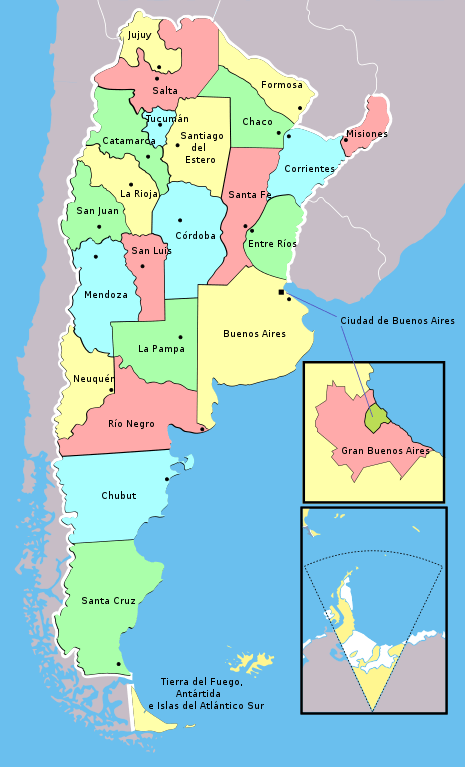
Political map depicting the provinces of Argentina
Historical, Cultural, and Natural Landmarks
Argentina is a vast and diverse country known for its rich history, vibrant culture, and stunning natural landscapes. Here are some notable historical, cultural, and natural landmarks in Argentina by region:
Argentine Northwest
The Argentine Northwest is a popular tourist destination, with attractions such as the city of Salta, the Quebrada de Humahuaca, the Salinas Grandes salt flats, and several national parks.
The region is also home to indigenous peoples, including the Quechua, Aymara, and Guaraní. These peoples have a rich history and culture, reflected in the region's architecture, art, and music.
Some of the top cultural landmarks and natural attractions in the Argentine Northwest include:
City of Salta: The city of Salta is the capital of the province of Salta and is a significant tourist destination. It is known for its colonial architecture, lively nightlife, and proximity to the Quebrada de Humahuaca.
Quebrada de Humahuaca: Quebrada de Humahuaca is a UNESCO World Heritage Site and is one of the most popular tourist destinations in the Argentine Northwest. The Quebrada is a narrow valley home to various natural and cultural attractions, including the Humahuaca Gorge, the Seven Colors Mountain, and the Pucará de Tilcara.
Salinas Grandes: Salinas Grandes are Argentina's most extensive salt flats and popular tourist destinations. Located in the province of Jujuy, they are a stunning sight, especially when covered in a white salt blanket during the dry season.
Calilegua National Park: Parque Nacional Calilegua is the largest national park in the Argentine Northwest. It protects one of Argentina's most diverse ecosystems, the subtropical evergreen mountain rainforests known as Southern Andean Yungas. The park has an extensive hiking and biking trails network and a camping area.
Los Cardones National Park: Parque Nacional Los Cardones is in Salta province. The park is home to various cacti, including the giant cardón cactus, which can grow up to 18 m (60 ft) tall.
Talampaya National Park: Parque Nacional Talampaya, located in La Rioja, is part of a larger UNESCO World Heritage Site. The park is home to various geological formations, including towering sandstone cliffs, canyons, and waterfalls.
Gran Chaco
The Gran Chaco region offers ecotourism and nature exploration opportunities. National parks and protected areas allow visitors to experience the unique ecosystem and observe its flora and fauna. The region is also home to some indigenous peoples, including the Wichí, Toba, and Mocoví.
The Gran Chaco allows visitors to explore a less-explored part of Argentina and appreciate this fascinating region's natural and cultural richness. Some of the top attractions in Argentina's Gran Chaco region include:
Chaco National Park: Parque Nacional Chaco is located in the province of Chaco and is home to various wildlife, including jaguars, ocelots, anteaters, armadillos, and tapirs. The park also has several hiking trails and camping areas.
El Impenetrable National Park: Parque Nacional El Impenetrable is located in the province of Chaco and is home to various wildlife, including jaguars, ocelots, tapirs, and giant anteaters. The park is also home to several indigenous peoples, including the Wichí and Toba.
Río Pilcomayo National Park: Parque Nacional Río Pilcomayo is located in the northeastern part of the province of Formosa, on the border with Paraguay. It was established to protect the natural features of the Humid Chaco ecoregion, including the Pilcomayo River and its associated grasslands, marshes, lakes, and forests.
Bañado La Estrella: This wetland, one of the largest in South America, is located in the province of Formosa and is a popular destination for birdwatching. It is home to various birds, including herons, ibises, and storks.
Museo del Hombre Chaqueño: This museum is located in Resistencia and is dedicated to the history and culture of the Gran Chaco region. It houses a collection of artifacts from the area, including weapons, tools, and clothing.
Mesopotamia
In northeastern Argentina, Mesopotamia is bordered by Paraguay to the north, Brazil and Uruguay to the east, and the provinces of Santa Fe and Córdoba to the south. The region is known for its natural beauty, including many rivers, waterfalls, and forests.
Some of the most important attractions in Mesopotamia include:
Iguazú National Park: Parque Nacional Iguazú is located in the Misiones province at the northeastern tip of Argentina, spanning the border with Brazil. Iguazú Falls, the semicircular waterfall at the heart of the park, has numerous cascades producing vast sprays of water, making it one of the most spectacular waterfalls in the world.
Iberá Wetlands: The Iberá Wetlands are a vast and vital wetland ecosystem. They are home to various wildlife, including jaguars, caimans, and giant anteaters. The wetlands also offer many opportunities for fishing, boating, and birdwatching in the wetlands.
Iberá National Park: Parque Nacional Iberá is a large protected area home to the Iberá Wetlands. The park is a popular destination for ecotourism and offers a variety of activities, such as hiking, camping, and birdwatching.
Jesuit Missions: In the 17th and 18th centuries, Jesuit missionaries established a series of missions in what is now Mesopotamia. The ruins of these missions can still be seen today, and they are a UNESCO World Heritage Site.
Corrientes: The city of Corrientes is the capital of Corrientes Province. It is a charming city with a rich history and culture.
Gualeguaychú: The city of Gualeguaychú is known for its carnival, which is one of the largest in Argentina.
Colonia Carlos Pellegrini: The town of Colonia Carlos Pellegrini is located on the banks of the Uruguay River. It is a popular destination for fishing and ecotourism.
Mocona Falls: The Mocona Falls are a series of waterfalls located on the Paraná River. They are not as well-known as the Iguazu Falls but are impressive.
El Palmar National Park: Parque Nacional El Palmar is home to a large population of yatay palms. It is a popular destination for hiking, birdwatching, and camping.
Cuyo
Cuyo is a historical wine-producing region located in the mountainous area of west-central Argentina. Along with the city of Mendoza, some of Argentina's most popular tourist attractions are found here, including the highest mountain massifs in the Andes.
Some of the most important attractions in Cuyo include:
Aconcagua: Aconcagua is the highest mountain outside of Asia. It is located in the Andes Mountains and is a popular destination for climbers.
Mendoza: The City of Mendoza is the capital of the province of Mendoza. It is a popular tourist destination and is known for its wine production.
Talampaya National Park: Parque Nacional Talampaya is located in the province of La Rioja. It is home to various geological formations, including canyons, cliffs, and caves.
Ischigualasto Provincial Park: Parque Provincial Ischigualasto, also called Valle de la Luna, is located in the province of San Juan. It is home to a variety of fossils, including dinosaurs.
Uco Valley: Valle de Uco is a wine-producing region located in the province of Mendoza. It is home to some of the best wineries in Argentina.
Pampas
The Pampas region of Argentina is a vast and beautiful area with a rich history and culture. Here are some of the main cultural attractions and natural landmarks:
Buenos Aires: The capital of Argentina, Buenos Aires is a cosmopolitan city with a vibrant cultural scene. There are many museums, theaters, and art galleries to explore, as well as various restaurants and bars.
Río de la Plata: The Río de la Plata is the second-widest river in the world after the Amazon River, located on the border between Argentina and Uruguay. The river is home to various wildlife, including dolphins, penguins, and sea lions. It is also a popular destination for fishing, sailing, and swimming.
Gaucho culture: The Pampas region is home to the gaucho, a traditional cowboy culture. There are many opportunities to learn about Gaucho culture, including visiting Gaucho ranches and participating in horse riding and cattle herding activities.
Patagonia
The Patagonia region in Argentina is renowned for its breathtaking landscapes and diverse ecosystems. Some important landmarks include:
Peninsula Valdes: Located on the Atlantic coast, Peninsula Valdes is a UNESCO World Heritage site and a haven for marine wildlife. It is particularly famous for its southern right whale population, which visits the area for breeding and calving. Visitors can also spot sea lions, elephant seals, penguins, and various bird species. Whale-watching tours, diving excursions, and wildlife observation are popular activities in this area.
El Chaltén: El Chaltén is a small mountain village in southern Argentina, near the border with Chile. It is a popular base for hiking numerous trails leading to the base of surrounding peaks and glacial lakes, including Cerro Torre, Mount Fitz Roy, and Lago del Desierto.
Ushuaia: Known as the "End of the World," Ushuaia is the world's southernmost city and the gateway to Antarctica. It offers a variety of attractions, including boat trips along the Beagle Channel, visits to Tierra del Fuego National Park, and opportunities for outdoor activities like hiking, skiing, and wildlife watching. Ushuaia also has fascinating museums and cultural sites that showcase the region's history and indigenous heritage.
Patagonia is home to several remarkable national parks that attract nature enthusiasts worldwide. Here is a list of national parks in Argentine Patagonia from north to south:
Nahuel Huapi National Park: Located in the provinces of Río Negro and Neuquén, it is Argentina's oldest national park and encompasses a vast area of lakes, mountains, and forests.
Los Arrayanes National Park: Situated on the Quetrihué Peninsula within Nahuel Huapi National Park, this small park is known for its unique forest of ancient arrayán trees.
Lago Puelo National Park: Located in the province of Chubut, this park offers picturesque landscapes of lakes, mountains, and lush forests, including the beautiful turquoise waters of Lago Puelo.
Los Alerces National Park: Situated in the province of Chubut, it is named after the ancient Alerces trees that populate the park. The park features pristine lakes, glaciers, and rivers, including the stunning Futaleufú River.
Perito Moreno National Park: Located in the province of Santa Cruz, this park is known for its diverse ecosystems, including the majestic Perito Moreno Glacier, forests, and steppe landscapes.
Los Glaciares National Park: Situated in Santa Cruz, it is one of Argentina's most renowned national parks. It is home to awe-inspiring glaciers, including the Perito Moreno Glacier and the Fitz Roy mountain range.
Tierra del Fuego National Park: Located on Tierra del Fuego Island, this national park showcases the unique landscapes of the southernmost region of Patagonia. It encompasses forests, lakes, rivers, and stunning coastal scenery.
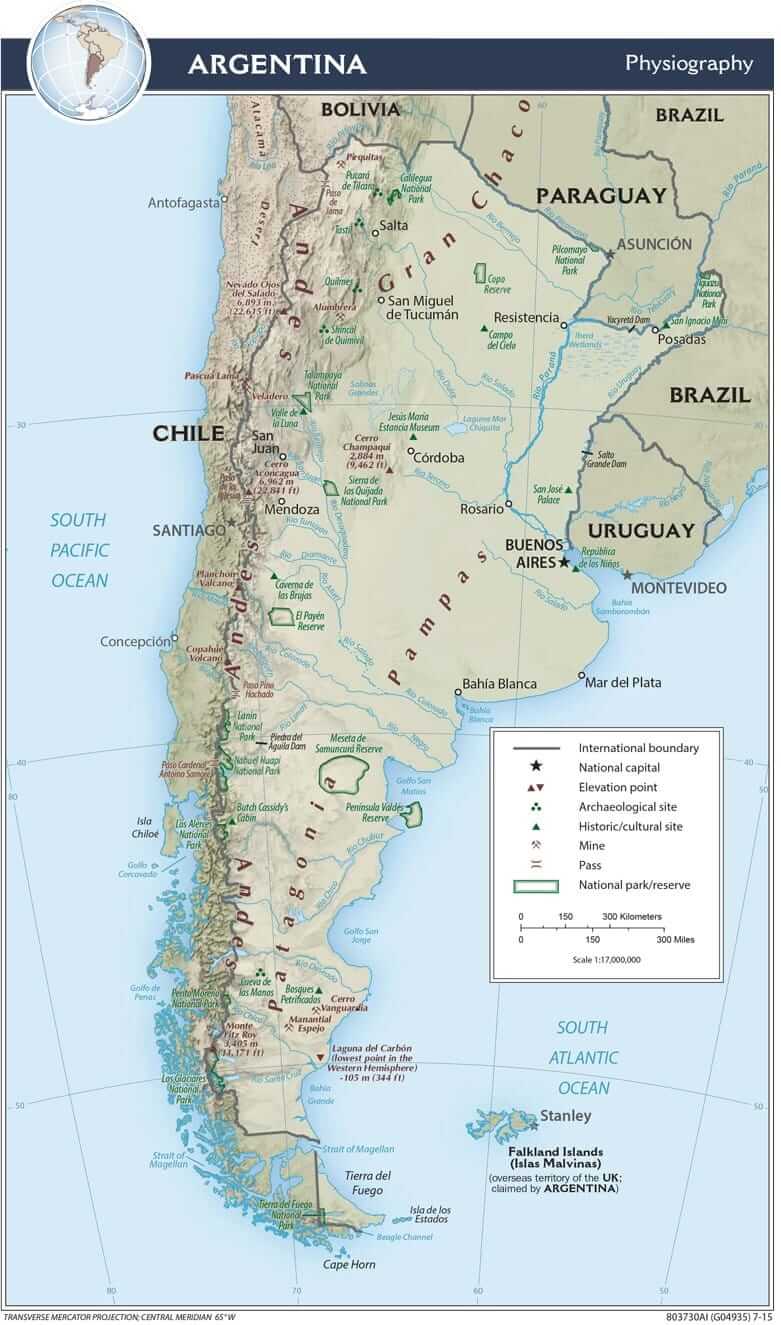
Argentina physiographic map.
